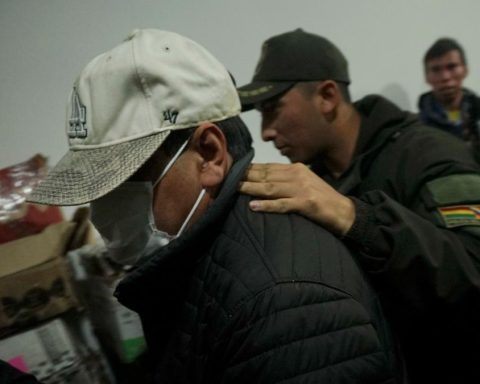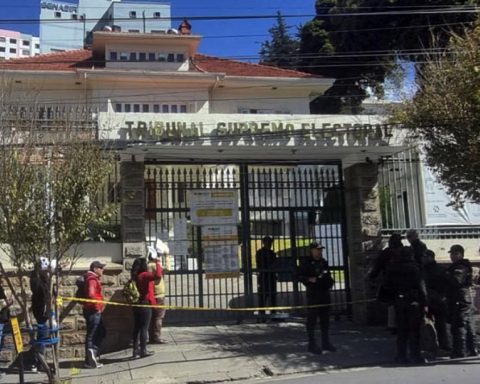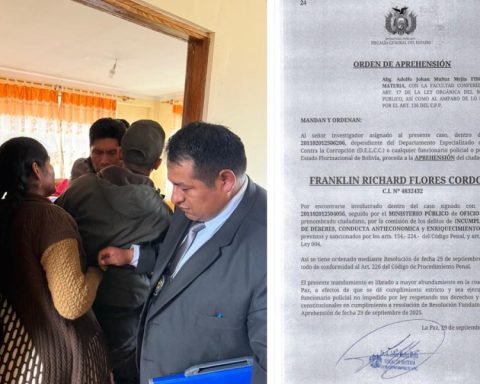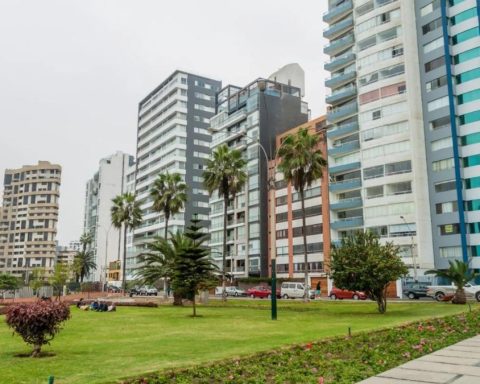November 4, 2024, 18:18 PM
November 4, 2024, 18:18 PM
The diesel shortage in the country is now added gasoline shortage. On Monday, in the city of Santa Cruz, the pumps woke up with rows of up to five blocks to refuel and the drivers complained that they had to wait up to two hours to reach the pump and “beg” that the supply does not run out.
The Santa Cruz Suppliers Association (Asosur) once again declared a “state of emergency” because, according to the regulations, they must provide a 24/7 service; but the state YPFB has ordered that the tankers carry only 10 thousand liters, of the 35 thousand that they must take to the service stations. From the oil company, they were informed that rationing It is due to blockages that mainly affect the department of Cochabamba.
“There are provincial service stations that For 10 days they have not received a single liter of diesel and it is regrettable, because the agricultural sector is being harmed significantly, especially in this season that is essential for producing food,” declared this Monday the Asosur manager, Susy Dorado.
The executive painted a critical overview for the owners of the pumps, since the fuel that arrives daily – diesel or gasoline – It only lasts between three and four hours, and the rest of the day is idle time for the staff; but operating costs are maintained.
“This situation is leading us to fire people (operators) at this moment, and we are already one step away from Christmas. We don’t know how they are going to cover the needs of their families. It’s taking us to get rid of the spreadsheet, and this is also very sad, because there are operating personnel for years at the service stations,” lamented Dorado.
Given the situation, Asosur has already asked the Government for regulations that allow them import fuel to market, since there is a similar one, but it is for the own consumption of large consumers (Decree 5218). “We consider that It is one of the solutions that we can, as a sector, suggest to the State,” indicated the manager of Asosur, mentioning that, in this regard, no response has been received.
THE DUTY tried to obtain the YPFB version, but from the Communication offices, they indicated that there was no call for the press to talk about the subject. It was also not possible to have the version of the National Hydrocarbon Agency (ANH).
Logistical problems
The president of the National Tanker Transport Association, César Mansilla, explained to EL DEBER that in Santa Cruz, some 300 vehicles are dedicated to transporting fuel; but that, currently, only 50% is operating, both in the city and in the provinces. In addition, he indicated that a good number are stranded outside the Palmasola refinery (Guillermo Elder Bell), to unload into the YPFB Logistics tanks.
According to Mansilla, drivers have to wait up to 15 days to unload the gasoline, because YPFB does not have the other two components, base gasoline and ethanol, which must be mixed during unloading time, since the company does not have the storage capacity.
YPFB produces three types of gasoline for the national brand: 85 octane, called Special; 95 octane, called Premium Plus (+) and 100 octane, Ultra Premium 100.
“The (imported) product cannot be unloaded until the other two products arrive. Do not forget that, regarding gasoline, a mixture of three products is made (…). There are trucks with alcohol, there are trucks with base 81 (octane) (gasoline) and, “If one of them does not arrive, they cannot unload because they do not have reserve tanks for each product,” held.
In the case of diesel, he indicated that each beginning of the month is a problem because YPFB has to do “the closing of the previous month” and if a tanker did not load, it must return all documentation and restart the process to remove the productwhich extends the wait up to four days. “People (tank drivers) don’t know what to do, their money is already in Yacimientos (YPFB), they can’t pick up the fuel and they don’t know when they are going to pick it up,” he stressed.
Mansilla also mentioned that the tankers that distribute fuel in the provinces made three trips and now make only one. “The carrier is the one who loses the most, because once you receive the document to upload, it can no longer be moved from Deposits and, by not charging on the day or the next day, that means not being able to work in another field or with another GRACO client (Large Consumers),” he lamented.
Queues in Argentina
A former leader of the hydrocarbon transportation sector – who asked to remain anonymous – who was in the Argentine city of Zárate (northeast of Buenos Aires) this Monday, stated that again Queues form around the plant of the logistics company Vitcowhere they would have indicated that YPFB again owes money for the volumes previously shipped.
Asked by EL DEBER about the arrival of fuel to Santa Cruz, he maintained that the route sheets are directed only to Oruro and La Pazwhich is why they were waiting almost a week to load up on gasoline and diesel. “He Tankers left for Santa Cruz on Saturdaybut what we are going to load is for La Paz,” commented the carrier.
Furthermore, a new difficulty arose in Zárate: the authorities of Transit have prohibited drivers from parking vehicles near the plant, so they have had to move their units out of the city. With the latest rains in the area, several trucks were left stuck in the mud. About 100 tankers are waiting to load fuel at the Vitco plant.

















